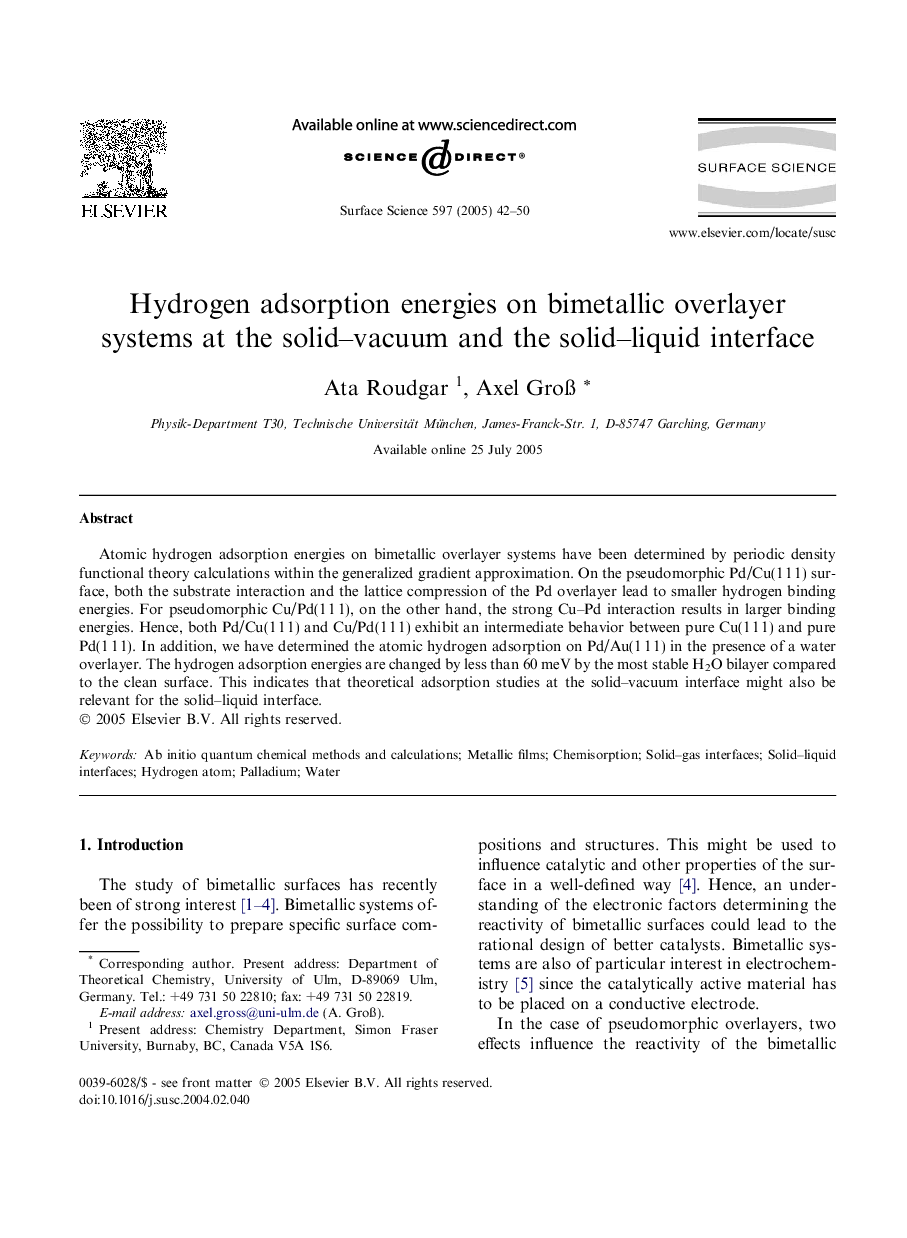| Article ID | Journal | Published Year | Pages | File Type |
|---|---|---|---|---|
| 9594751 | Surface Science | 2005 | 9 Pages |
Abstract
Atomic hydrogen adsorption energies on bimetallic overlayer systems have been determined by periodic density functional theory calculations within the generalized gradient approximation. On the pseudomorphic Pd/Cu(1Â 1Â 1) surface, both the substrate interaction and the lattice compression of the Pd overlayer lead to smaller hydrogen binding energies. For pseudomorphic Cu/Pd(1Â 1Â 1), on the other hand, the strong Cu-Pd interaction results in larger binding energies. Hence, both Pd/Cu(1Â 1Â 1) and Cu/Pd(1Â 1Â 1) exhibit an intermediate behavior between pure Cu(1Â 1Â 1) and pure Pd(1Â 1Â 1). In addition, we have determined the atomic hydrogen adsorption on Pd/Au(1Â 1Â 1) in the presence of a water overlayer. The hydrogen adsorption energies are changed by less than 60Â meV by the most stable H2O bilayer compared to the clean surface. This indicates that theoretical adsorption studies at the solid-vacuum interface might also be relevant for the solid-liquid interface.
Keywords
Related Topics
Physical Sciences and Engineering
Chemistry
Physical and Theoretical Chemistry
Authors
Ata Roudgar, Axel GroÃ,
